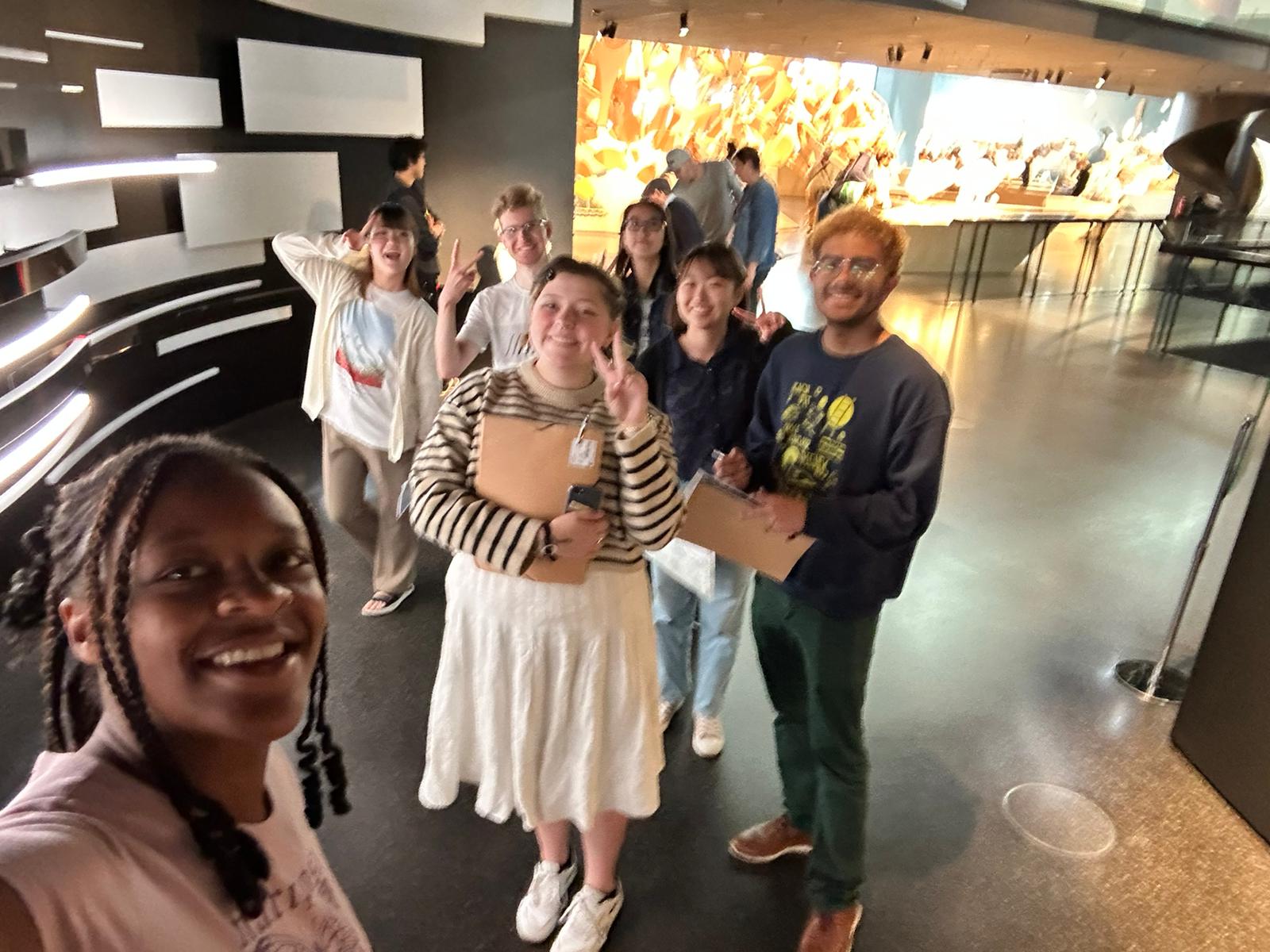
The House of Futures
For our second excursion, my class visited the Futurium, which is Berlin’s “house of futures.” In practice, the museum is mostly a science museum. It discusses some of the more futuristic work being done today and where it might lead to. There’s a significant focus on AI and sustainability, and there’s also a section wondering about the future of governance and civil society. In a conversation at the end of the day with my professor, she mentioned that some of her previous American students had said there was nothing quite like the Futurium in the US. I would also say that’s true. Both because climate change in particular, which took up probably a third of the museum, is incredibly politically contested in the US, but also because it’s just an unusual museum. It was a very interesting place to visit after the Humboldt Forum, which was our last excursion and what I wrote my last blog post about. The Humboldt Forum is pretty much a history museum, and the Futurium is almost an anti-history museum. At the same time, the two are similar in that they really encourage the visitor to think of the present as a site of change.
In his essay, “Of Other Spaces,” Foucault spoke of the museum as a temporally unique place. In the museum, he wrote, “time never stops building up and topping its own summit.” There, “the idea of accumulating everything, of establishing a sort of general archive, the will to enclose in one place all times, all epochs, all forms, all tastes… this whole idea belongs to our modernity. The museum… [is] proper to western culture of the nineteenth century.” In my time in Berlin, I’ve visited a lot of different museums. What Foucault had to say was certainly true of my experience of most of those museums. In the grand halls of the Pergamon, the Altes Museum, or the Neues Museum, one does feel transported to an unspecific past hosting a general archive of many dead cultures. But in the Futurium and the Humboldt Forum, I felt there was a completely different orientation to time. In both, there was still this fixation with accumulation, but that accumulation was building towards something. In these new museums, the present is more than just an observer of a different time. In a way, the experience of both feels kind of like a phone call. At first, the present must listen to what the past and future have to say, and at the end, it is asked to respond. In that process, there is something profoundly politically and socially moving that comes out. I wonder if this will be the museum experience characteristic to the landscape of the twenty-first century.
